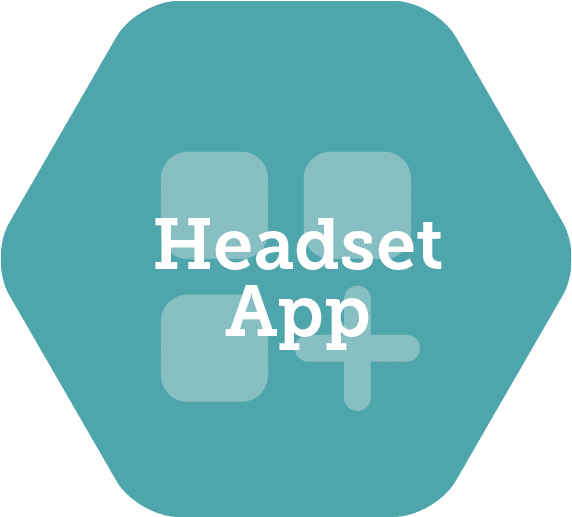Goals are essential to every project, especially when your organization is trying something new. Once you have determined that VR is the right modality for your organization’s training program, the next step is setting your employee training goals. Employee training goals can be categorized in several ways. Three of the most common are business and productivity goals, learning outcomes, and key performance indicators (KPIs).
Business and Productivity Goals
It can be difficult to see business success as a direct result of training initiatives. Basing learning outcomes and performance indicators on actual measurable improvements in productivity and the bottom line go a long way to getting buy-in from all stakeholders. Taking time to identify the business problem that you are trying to solve with the training is a great place to start with goal setting. Collaborating with others on the business goals your organization is hoping to meet will help when setting the needs of your employee training goals.
At Motive, we use the Action Mapping methodology to provide a framework for our goals. Action Mapping encourages you to examine the problem, think through whether you have any statistics that exemplify the problem, and set a measurable goal that will show improvement. See this blog post on our use of Action Mapping.
To illustrate a business and productivity goal, we will use a fictional food preparation company, The Food Company:
The Food Company spot-checks their equipment for bacterial contamination. The current rate of contamination is 1%. Contamination of food preparation machinery can lead to customer illness and food spoilage. Through training, they hope to lower the rate of contamination to below 0.2%.
Once you have a specific and measurable goal for your training program, adding a time component will help to keep the training team accountable and put boundaries in place. Our goal for the above example could read:
The Food Company will achieve a contamination rate below 0.2% within 6 months of training completion.
Learning Outcomes
A learning outcome describes the general purpose of the training. You need to decide what you hope the training will accomplish. Learning outcomes should be both specific and realistic. What will your employees be able to do by the end of their training sessions? For example:
Learners will be able to disassemble, sanitize, and reassemble a Foodbot 3000.
Read more about how to create learning outcomes specific to employee training from eLearning Industry here.
Key Performance Indicators
Key performance indicators describe measurable and quantifiable expectations for the task at hand. Using performance indicators helps you understand whether you are achieving your overarching employee training goals, therefore making it easier to determine success or failure. Performance indicators should be influenced by examining why the task is not currently being performed to expectations. To build on our example from above, performance indicators for the Foodbot task could be:
Learner will remember to loosen all 6 screws on the cover plate to reveal the inner chamber of the Foodbot.
Learner will scrub all widgets in the inner chamber a minimum of 10 times using the Foodbot cleaning solvent.
Learner will test the surface of the Foodbot upon completion to check for contaminants.
The performance indicators you come up with will inform the activities replicated in the VR training scenario. They must also remain top-of-mind as you design the interactions and user experience in the 3D environment.

Employees want a training program that is purposeful and effective. Once you clearly understand your business and productivity goals, determine your learning objectives, and set your key performance indicators, creating an impactful training program will become much easier. In the end, you’ll have a high quality training program.
Are you interested in learning more about learning design for VR?
Download our VR Learning Design Guide: Virtual Reality Learning Design: Best Practices for Trainee Success.
Latest Posts
- « Previous
- 1
- …
- 6
- 7
- 8
Stay in the Know
Want to stay up-to-date with what is going on in the world of immersive training? Subscribe to the Motive Blog.
Ready to revolutionize your training program?
We’re ready to show you how seamlessly you can create, edit and deploy VR training modules. Our team is standing by to help you revolutionize your training program.





